As one of the most important artists of the 20th century, Pablo Picasso contributed greatly to the development of modern art. Picasso, the pioneer of the Cubism art movement, is known for his revolutionary styles and bold techniques in the art world. The artist, who produced works in many different periods and with different techniques throughout his life, still has a great influence on art and the world today. In this article, we will compile 10 of Picasso’s most famous paintings and take a look at his style and the evolution of his art.
Guernica (1937)

This work by Picasso depicts the 1937 Nazi German air raid on the town of Guernica. This large-scale painting shows the terrible effects of war and the suffering of innocents. Made in black and white tones and full of deformed figures.
Les Demoiselles d’Avignon (1907)
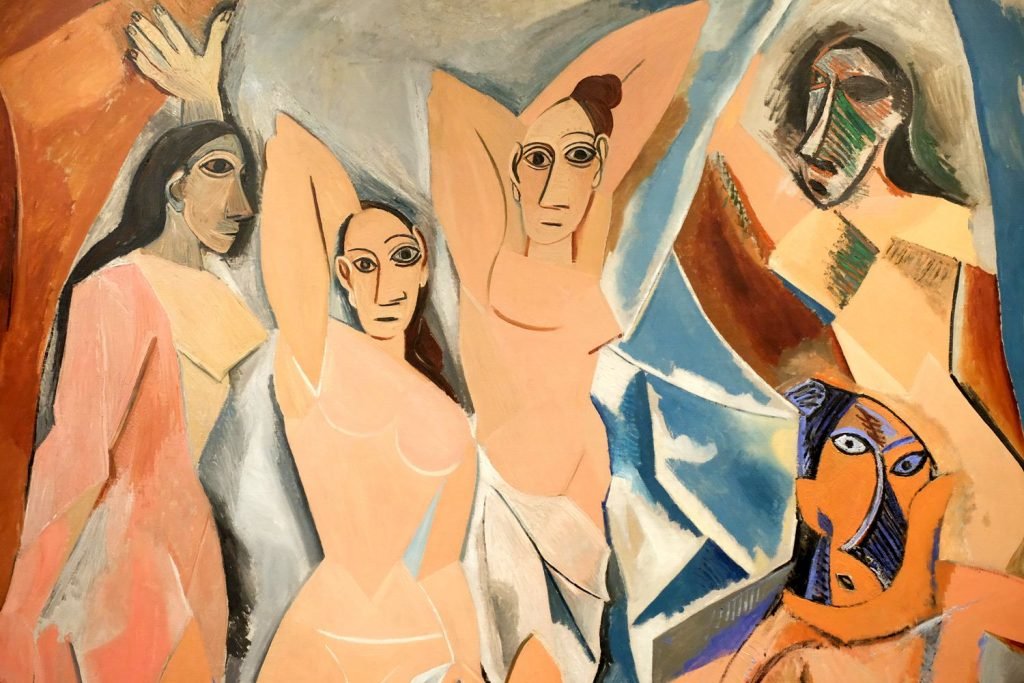
This work is a cubist depiction of five nude women. The figures are made using geometric forms and rejecting traditional perspective. Picasso was inspired by African masks to shape facial expressions.
The Weeping Woman (1937)
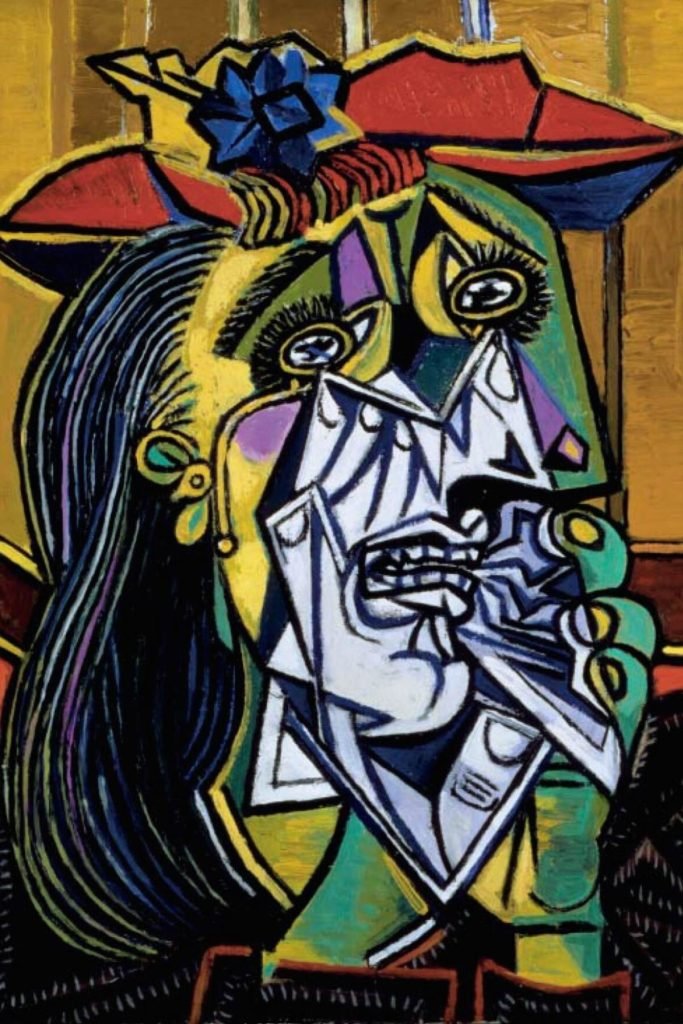
This work is one of a series of paintings made after Guernica and reveals how war transforms into individual suffering. Depicting a woman in tears, the work is full of bright and striking colors. Picasso exhibited the effects of Cubism by cutting the female figure into pieces with sharp lines. Tears, dramatic expressions in the mouth and hands symbolize the destruction brought by war.
Girl Before a Mirror (1932)

Picasso’s subject is his lover Marie-Thérèse Walter. A woman’s reflection in a mirror appears distorted and different from the real one. The work presents an examination of identity and perception.
The Old Guitarist (1903-1904)
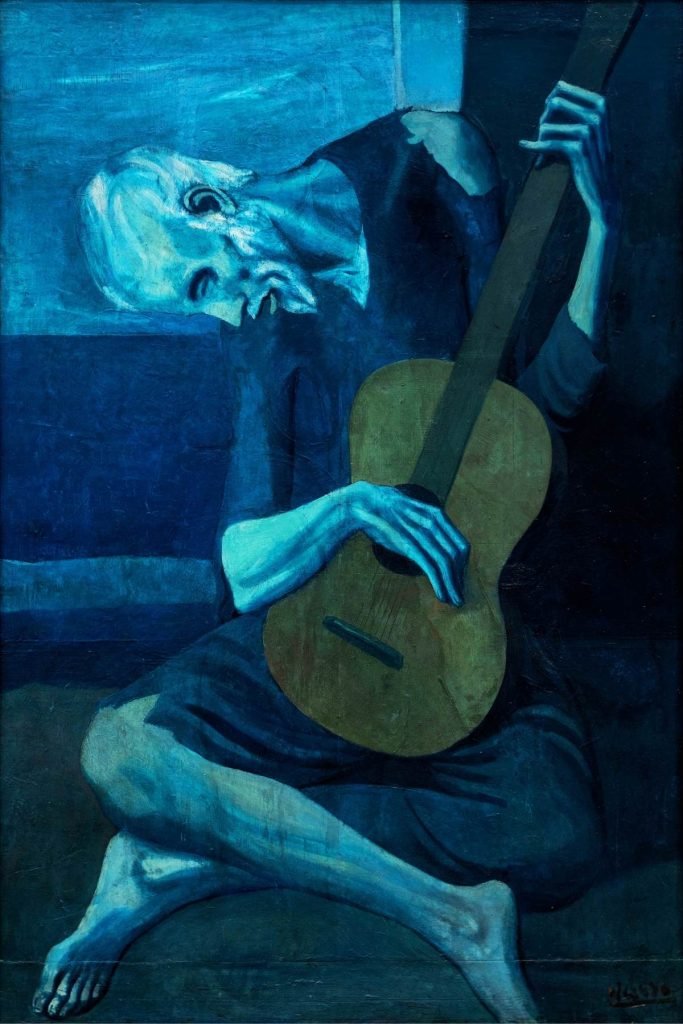
This work belongs to Picasso’s Blue Period. It depicts a lonely man playing the guitar and reflects a sad mood. The blue tones make this mood more pronounced. The painting is painted with a palette dominated by shades of blue, and this color choice emphasizes the character’s helplessness and sadness. The weak and bony structure of the figure symbolizes the physical and emotional fragility of man. This work is seen as a reflection of the personal losses Picasso experienced during his youth and the economic difficulties of the period.
Three Musicians (1921)
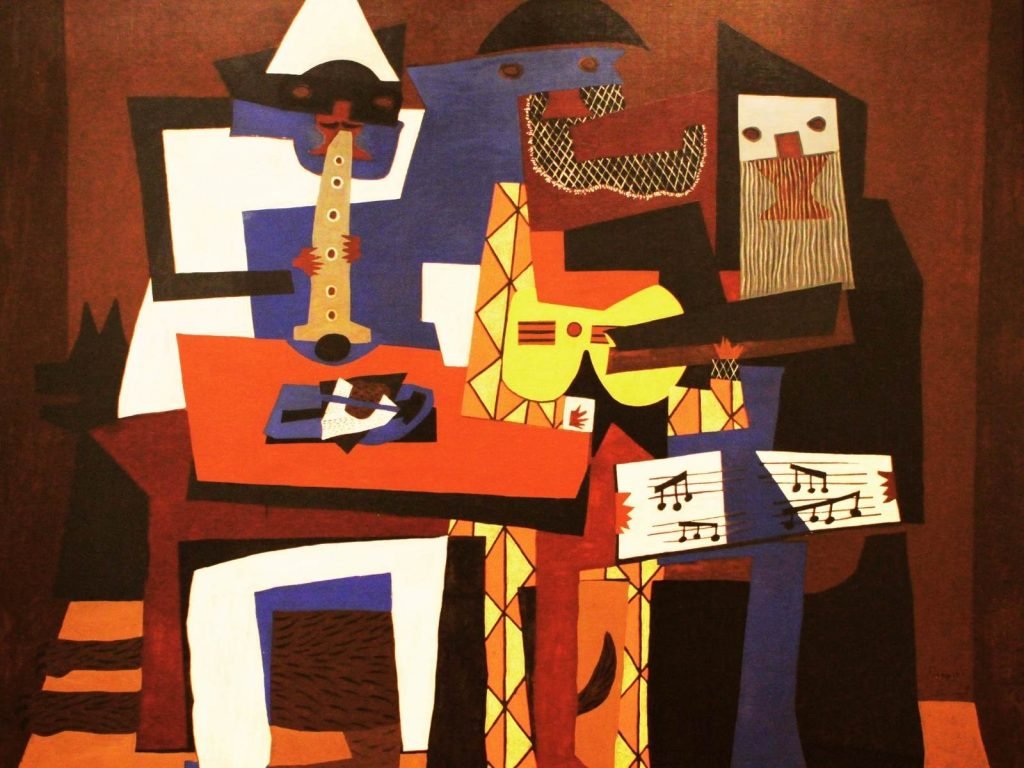
In this Synthetic Cubism work, three musicians are shown in geometric forms. The colorful and sharp lines reflect a musical rhythm.
The Life (La Vie) (1903)
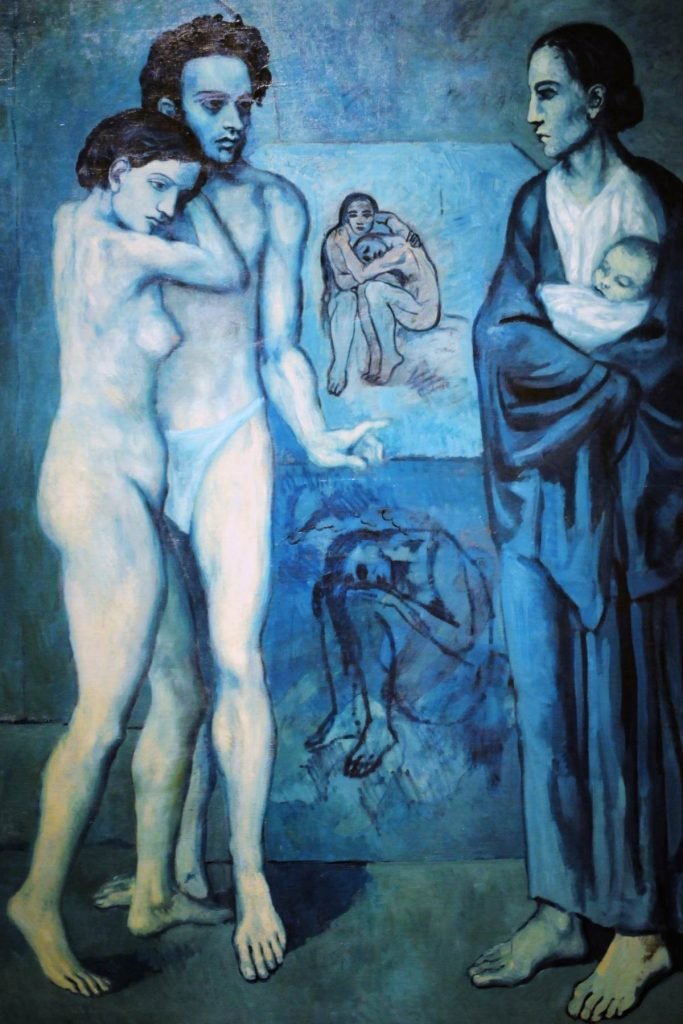
It is another work from Picasso’s Blue Period. It offers a profound expression on human relationships, life and death. The work features the figures of a woman and a man.
La lecture (Reading Woman)

This painting by Picasso is a simple depiction of a woman reading. The woman is focused on her book and surrounded by flat forms.
The Dream (Le Rêve) (1932)
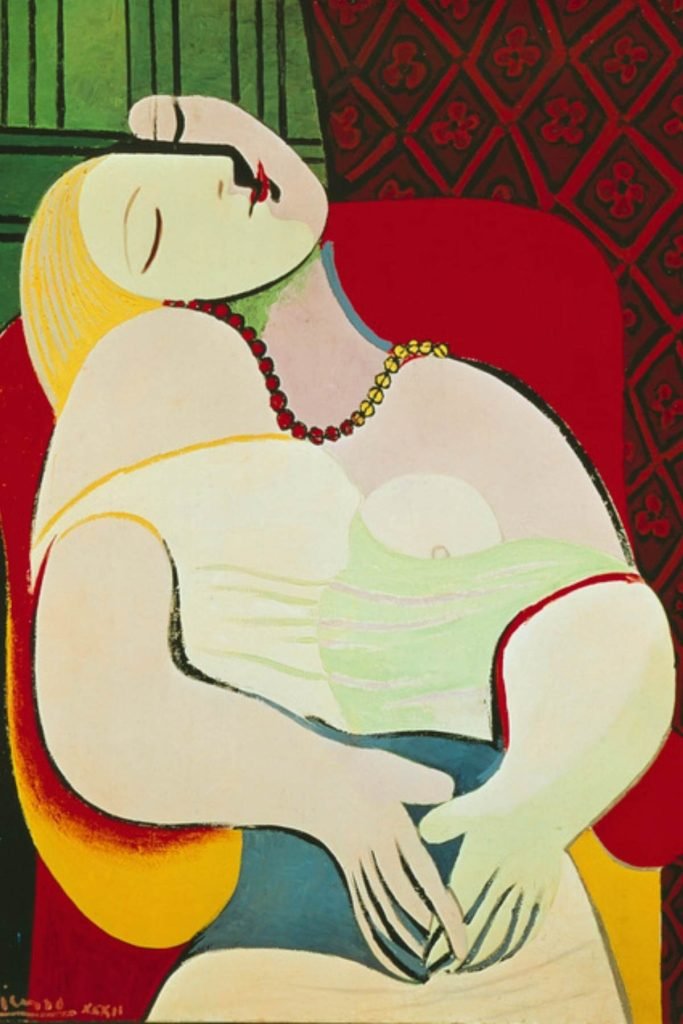
This is a romantic and erotic work in which Picasso depicts his lover Marie-Thérèse Walter asleep. The female figure is drawn with round and soft lines and her face is almost abstracted. The painting, dominated by warm colors such as yellow and red, offers the viewer a dreamlike atmosphere. This work, which contains a softened version of Cubism, is one of the most important examples of how Picasso expressed love and passion through his art.
Don Quixote (1955)

This drawing shows Miguel de Cervantes’ famous character Don Quixote and his sidekick Sancho Panza. It is a minimalist work, made with simple lines and reflecting the personalities of the characters.

